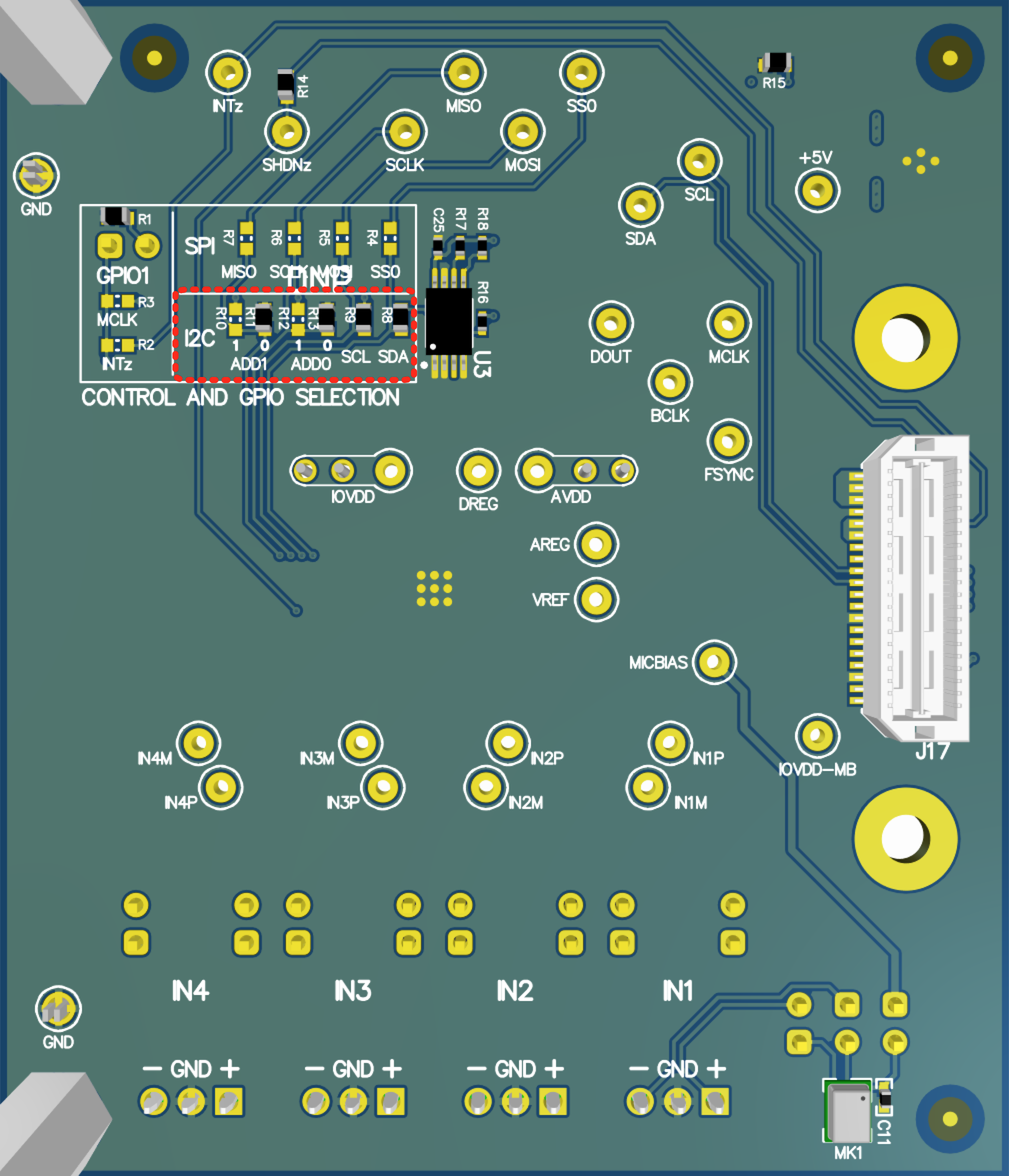SBAA383C January 2020 – January 2024 TLV320ADC3120 , TLV320ADC3140 , TLV320ADC5120 , TLV320ADC5140 , TLV320ADC6120 , TLV320ADC6140
4.1 Changing the Default I2C Address of the TLV320ADCx140/PCMx140-Q1
When multiple TLV320ADCx140/PCMx140-Q1 EVMs are connected to a single I2C bus, each EVM must have a unique I2C address. On TLV320ADCx140 EVMs, the I2C address is set by pullups and pulldowns on the Control and GPIO Selection at the underside of the board, as shown in Figure 4-2. Placement of the resistors in this section, as shown in Table 4-1, controls the I2C address of each TLV320ADCx140 device.
On PCMx140-Q1 EVMs, the I2C address is set by jumpers on the top side of the board.
 Figure 4-2 I2C Address Configuration for the TLV320ADx140 EVM
Figure 4-2 I2C Address Configuration for the TLV320ADx140 EVMTable 4-1 TLV320ADCx140/PCMx140-Q1 EVM I2C Slave Address
| ADD1 | ADD0 | I2C SLAVE ADDRESS (BINARY) | ||
|---|---|---|---|---|
| 1 | 0 | 1 | 0 | |
| Not Installed | Installed | Not Installed | Installed | 1001 100 |
| Not Installed | Installed | Installed | Not Installed | 1001 101 |
| Installed | Not Installed | Not Installed | Installed | 1001 110 |
| Installed | Not Installed | Installed | Not Installed | 1001 111 |